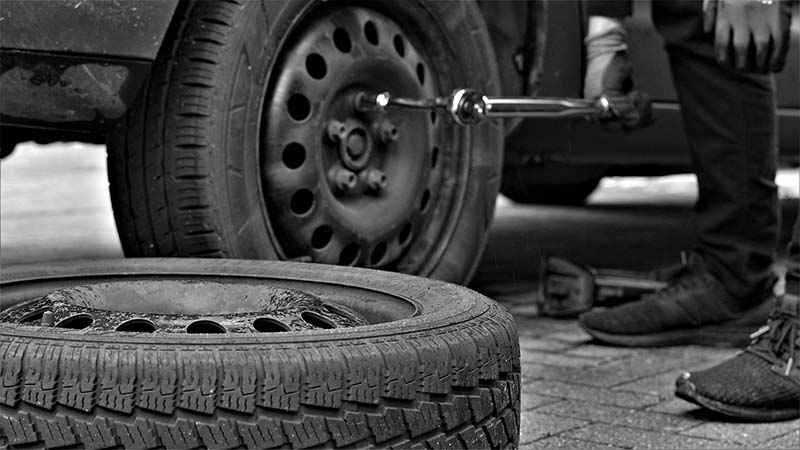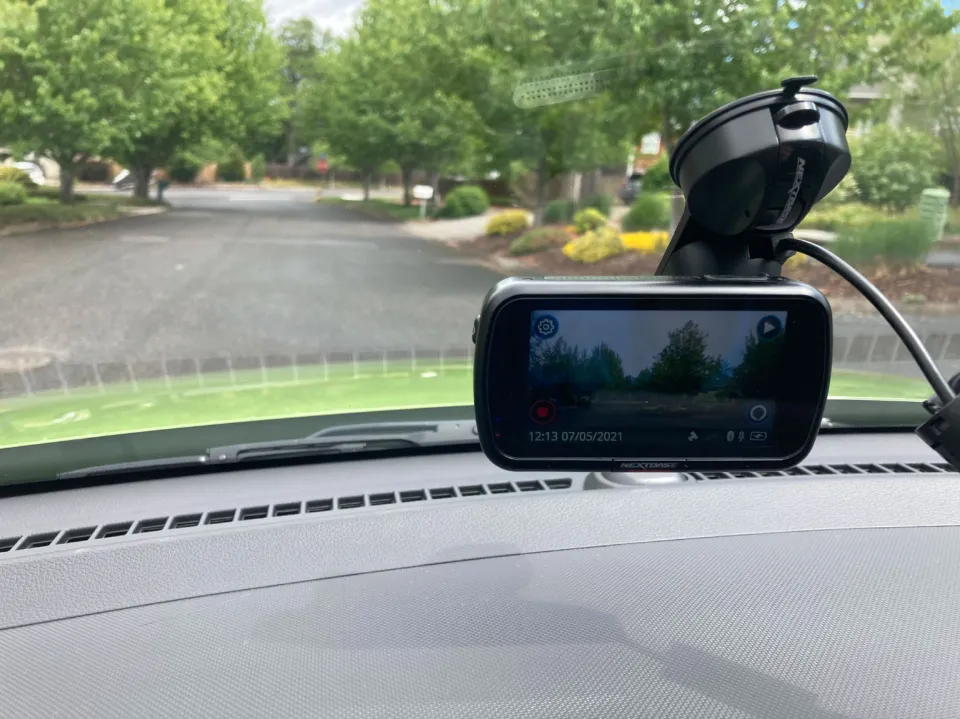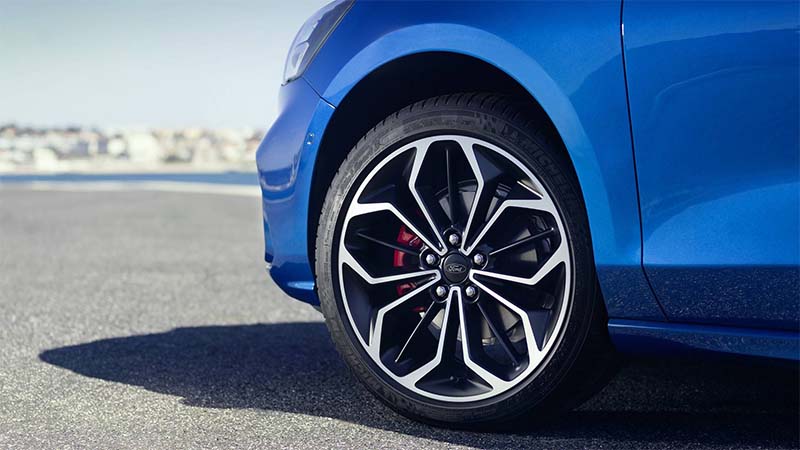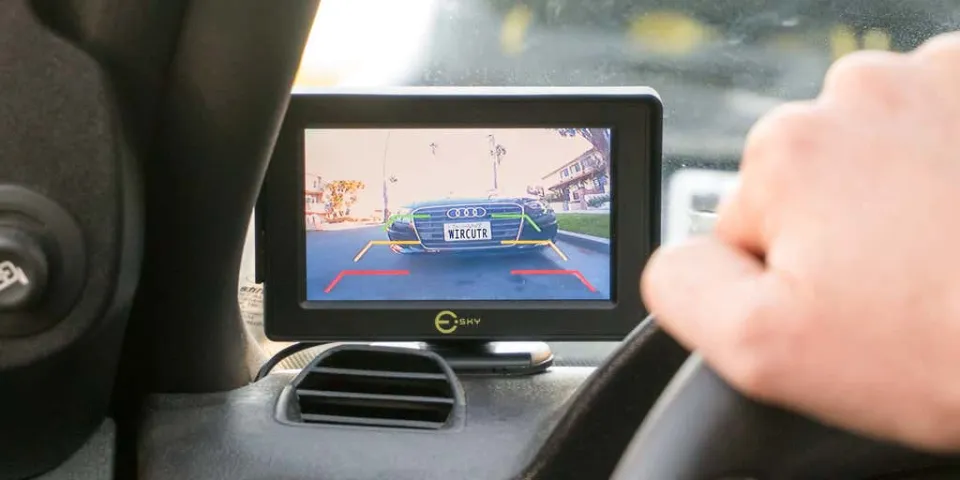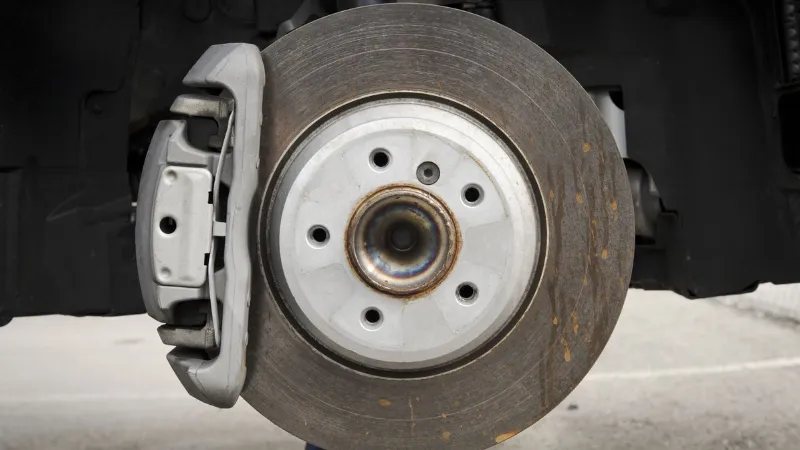Run-flat tires are typically more expensive than standard tires, but they can avoid the expense and hassle of changing a flat tire. Here is the question, how long do run flat tires last?
Under normal driving conditions, run-flat tires typically last 50,000 to 60,000 miles, which is equal to the lifespan of a standard tire. They have a maximum speed limit of 50 mph and have a lifespan of 50 miles when punctured.
Whenever a run-flat tire is punctured, a new run-flat tire should be used in its place. They are unable to be repaired like a typical tire.
Please read on.
How Long Do Run Flat Tires Last After a Puncture?
Most run-flat tires are designed to be used the same way a spare tire is used once they’ve been punctured:
- 50 MPH Maximum Speed
- 50 Miles Maximum Distance
Any run-flat tires that have a puncture should be replaced, not patched. If you drive frequently in an area where there are many potholes, this can get expensive.
As long as they can continue to hold the necessary amount of inflation pressure, self-sealing run-flat tires have no upper speed or distance limits after they have been punctured.
Self-sealing tires have one drawback: you might not even be aware of a puncture. Nevertheless, they will still be functional. They too cannot be repaired if they ever go flat, so you will need a new run-flat tire.
Toyota Run Flat Tires

How long do the run-flat tires on Toyotas last? Regarding the run flat tires that were installed on a small number of 2004 and 2005 all-wheel drive Siennas, Toyota and Dunlop reached a settlement. The lawsuit claimed that the tires began to lose tread after just 9,000 miles (about 14,500 km). Read about How Much Does A Lexus Cost?
BMW Run Flat Tires

How durable are BMW run-flat tires? BMW owners of models such as the X5, 550, 535i, and more have reported getting anywhere from 20,000 miles to as high as 50,000 miles from their run flat tires.
Pirelli Run Flat Tires

How durable are Pirelli run-flat tires? Pirelli says that after a puncture, their run flat tires could go for at least another 50 miles at a maximum speed of 50 mph.
Continental Run Flat Tires

What is the lifespan of Continental run-flat tires? For an additional 80km at 80 km/h and an additional 80 liters (21 gallons) of trunk space, Continental claims that its self-supporting run flat tires are capable.
Mini Cooper Run Flat Tires

How long do Mini Cooper run-flat tires last? According to estimates made by Mini Cooper enthusiasts, a Mini with a run-flat tire could travel an additional 100 miles at 50 mph when taking into account factors like the weight of the vehicle.
Mercedes Benz Run Flat Tires

How long do run-flat tires on Mercedes Benz last? Mercedes Benz specialists place the vehicles’ run flat tires at 50 miles at speeds of up to 50 mph.
Bridgestone Run Flat Tires

How long do the run-flat Bridgestone tires last? Bridgestone says that their run flat tires can provide the driver with 50 more miles at a maximum speed of 50 mph.
Michelin Run Flat Tires

How long do run-flat Michelin tires last? For 50 miles at 50 mph in the event of a puncture, Michelin’s Zero Pressure brand of tires uses run flat technology.
Goodyear Run Flat Tires

The lifespan of Goodyear run-flat tires is how long? When a tire is punctured, Goodyear’s Run On Flat or Extended Mobility Technology (EMT) allows for an additional 50 miles of travel at 50 mph.
How Many Miles Do Run Flat Tires Last?
The typical lifespan of conventional tires is 50,000–60,000 miles. But the lifespan of various tire types varies.
Sports car tires, for instance, have a soft tread compound that reduces tire life. This softer rubber formulation results in generally much shorter tire lifespans. 30,000 to 35,000 miles is fairly common.
Run-flat tires have a similar lifespan to conventional tires of the same design. There are no drawbacks to run-flat tires being built to run flat in terms of their durability.
There are still some drawbacks to run-flat tires. Run-flat tires typically cost more. Additionally, the self-supporting variety will ride rougher than a typical tire design.
How Many Years Do Run Flat Tires Last?
Run-flat tires have a lifespan of six years, which is the same as the lifespan of regular tires.
Ozone exposure and solar ultraviolet rays cause rubber compounds to deteriorate over time. The rubber starts to dry rot due to these external factors.
Most regularly used tires’ dry rot will have progressed to the point where it makes them unsafe to use by the time they reach their sixth year.
The majority of car and truck owners won’t experience dry rot because most regularly used tires will reach the end of their tread life before this happens.
When properly stored, airtight bags, away from direct sunlight, and in a temperature-controlled environment, tires can last longer than six years.
Do Run-flat Tires Last Longer Than Other Types?
Run-flat tires typically don’t last any longer than regular tires. The majority of run-flat tires can degrade quite quickly.
In the event that it goes flat, a run-flat tire’s thicker, stiffer sidewall enables the vehicle to tow the load. When you inflate a run-flat tire as opposed to an ordinary tire, it will typically be stiffer.
Another problem that shortens the lifespan of run-flat tires is blowouts. Blowouts are therefore to be expected when using run-flat tires.
more so if you ignore warning signs or drive on old run-flat tires.
It’s possible for a run-flat tire to slowly degrade.
generally without prior notice. If you don’t take good care of it, prepare for this. Alternatively, if a run-flat tire is used improperly or for an extended period of time after repair. Keep in mind that a run-flat tire typically experiences a puncture on the sidewall.

Do Run-Flat Tires Need Air?
Yes, they do, to put it succinctly. Run-flat tires are meant to be inflated to the same pressure as regular tires.
The distinction is that run-flat tires, even when flat (or nearly flat), will continue to support the weight of the vehicle for a predetermined amount of time and at a predetermined speed. Run-flat tires should still be handled the same as other tires, in other words.
Only by reading the tire’s sidewall or checking your owner’s manual will you be able to determine whether your car has run-flat tires.
Run-flat tires have a limited time without air pressure during which they can support the weight of your car. To be safe, you should have your tire checked and repaired if you know you’ve been driving on a flat tire.
The following is what that means: Your tire may still be holding air if you have been driving on a deflated tire for a distance of several miles.
The technology of sidewall reinforcement incorporated into run-flats allows it to do that. Therefore, it’s possible that you won’t realize there’s a problem until it’s too late.
Are Run Flat Tires Worth It?
In the end, it’s up to you to decide whether the trade-offs are worthwhile for you to make the switch to run-flat tires. The removal of spare tires from newly manufactured cars benefits the automakers. It frees up storage space, and many customers appreciate the sense of security a run-flat tire offers.
Although I personally don’t use them, I’m not necessarily against them either. Neither have I ever chosen to add them after buying a car or truck that already had them installed.
When I’ve been stranded with a flat tire, I’ve had to deal with the inconvenience of awaiting a tow truck, mounting a spare tire, or using a tire sealant and portable tire inflator.
If you can afford the higher price and don’t mind the rougher ride that comes with a tire with a reinforced sidewall and stiffer construction, it adds an additional layer of security that can be a real benefit.
How Do Run-flat Tires Rate?
The speed rating of a run-flat tire identifies the maximum speed that it can sustain without damaging itself.
For instance, Bridgestone run-flat tires continue to function even after some or all of the inflation pressure is lost. At its top speed, the Bridgestone can cover a distance of up to 50 miles.
The likelihood of controlling your car decreases as you go faster than is advised.
How Often Do Run-Flat Tires Need to Be Replaced?
The type of run-flat tire you have makes a difference. There are three types of run-flats and they are as follows:
- Type 1– The earliest type, these can only be driven for a brief period of time at a slower speed. You should drive no faster than 50 mph for no more than 50 miles to get to a service station if you notice that a tire is going flat.
- Type 2– These are newer models that can be driven faster and farther. Up to 100 miles at 55 mph can be safely driven with a flat tire, but you should head to a service station as soon as you can.
- Type 3– This is the most recent design of run-flat tire, and it can also be driven faster and farther. You should arrive at a service station as soon as you can if your tire starts to go flat. You can safely drive up to 200 miles at speeds of up to 55 mph.
Run-flat tires should typically be replaced every six years if you drive less than 10,000 miles annually. You should replace your tires every three to four years if you drive more than 10,000 miles annually.
Can I Replace Run Flat Tires With a Normal Tire?
The good news is that you can switch to conventional tires if you’ve read through the previous section and made up your mind to do so.
These days, they’re more prevalent on specific models of BMW, Mini, and Mercedes-Benz, and they’re all sufficiently well-liked that finding a set of wheels that fit them at your neighborhood auto shop would not be difficult.
Depending on size, intended use, etc., you would need to consult a professional to ensure that you are getting the right fit for your vehicle.
If you switch over, you should have a reliable backup plan in case of a puncture. Most manufacturers who ship vehicles with run flats installed typically do this to free up the space that would have gone to having a spare, something that is most obvious with Minis.
Discover a way to install a spare tire somewhere on the vehicle and learn how to change a tire, even if it’s just a small one that will do.
A trustworthy towing service could also be on hand, especially if you’re traveling at night or through less populated areas.

Are Run-flat Tires Good on the Highway?
Run-flat tires can be inflated and used on highways.
But your run-flat tire needs to have a few characteristics. Otherwise, you won’t enjoy using inflated run-flat tires while driving.
First, check to see if the tire has numerous sipes and deep lines. Your run-flat tires will be able to make 100% of surface contact thanks to these sipes in any kind of weather.
Uneven tread block patterns are another characteristic of a perfect run-flat tire. The designs will give your car’s tires the best highway performance.
Strong rubber compounds are another essential component of a great run-flat tire.
Run-flat tires are inflated similarly to regular tires. Maintaining the pressure of your run-flat tires is therefore essential. You must locate an air compressor hose as well as a power supply for the hose. After that, attach it straight to your tire’s valve stem.
You can drive as fast as you want on the highway with fully inflated run-flat tires.
You shouldn’t necessarily go as fast as 50 mph just because tire manufacturers advise you to. When you try to accelerate faster, some cars might start to vibrate or make odd noises. Driving your car on the freeway with run-flat tires won’t always be enjoyable.
How Long Do Run Flat Tires Last? FAQs
Do Run Flat Tires Need to Be Replaced After a Punctured Tire?
Once they have been punctured, run-flat tires must be replaced. Even if the puncture could be patched, they would no longer have the required structural integrity to be secure for continued operation.
Run-flat self-sealing tires are an exception to this rule. You won’t likely notice the puncture because these tires will continue to function like regular tires without losing pressure.
Can You Put Air in Run Flat Tires?
Like regular tires, run-flat tires are supported by air pressure. They are different because a puncture handling mechanism is already built into them.
Run-flat tires that are self-supporting and have an auxiliary support system cannot be re-pressurized after a puncture; instead, you must discard them and buy a new tire.
After a puncture, air pressure can be added to self-sealing run-flat tires, but if the tire can’t hold the necessary air pressure and seal properly, it must also be discarded and replaced.
Can You Fix a Run Flat Tire With a Nail in It?
The advice from the manufacturer is to replace the entire run flat if it has been harmed by a nail rather than attempting to repair it.
This is due to the fact that, as was already mentioned, they are constructed using more components than conventional tires, making it challenging to determine whether the nail caused more internal damage than initially thought.
Can You Replace Just One Run Flat Tire?
A single run-flat tire with wear or damage can be changed, just like conventional tires.
In most cases, finding one that is compatible with the rest of the set would cost more and be more difficult for various reasons.
So, How Long Do Run Flat Tires Last?
Using run-flat tires has some considerations that you need to make. Run-flat tires should only be used on vehicles equipped with TPMS, or tire pressure monitoring systems. When you have a puncture, this system will let you know.
In this manner, you will be aware that the window of opportunity for changing your run-flat tire is limited. Otherwise, you should use regular tires on your car.
Before installing run-flat tires, you might want to think about changing your vehicle’s suspension.
Your coil spring, control arm, and bolt joints for the suspension must be in good condition.
Run-flat tires’ stiffer construction will harm your tires. As a result, your suspension ought to be flawless.
Both you and other drivers should avoid using old run-flat tires. It would be beneficial if you always replaced your worn-out tires, regardless of tread depth. Don’t settle for used tires just because they are less expensive if your car needs new run-flat tires.
Read about Best Wheel Cleaners

